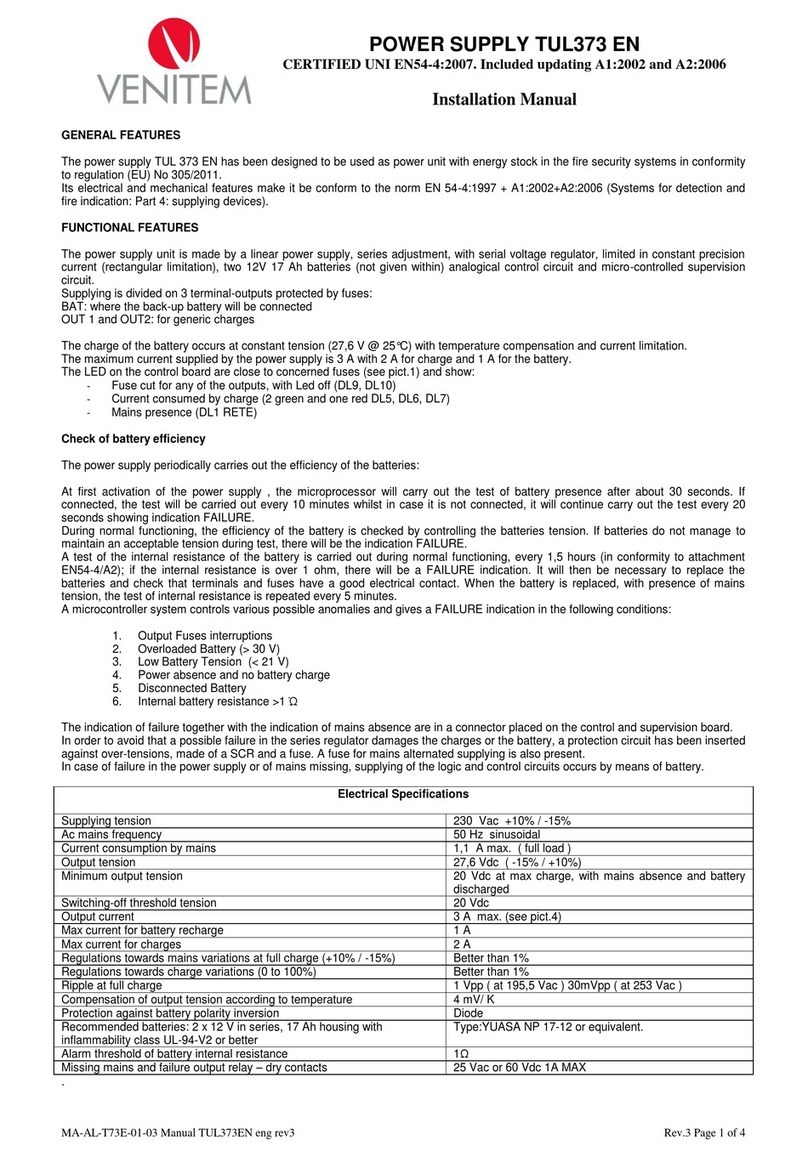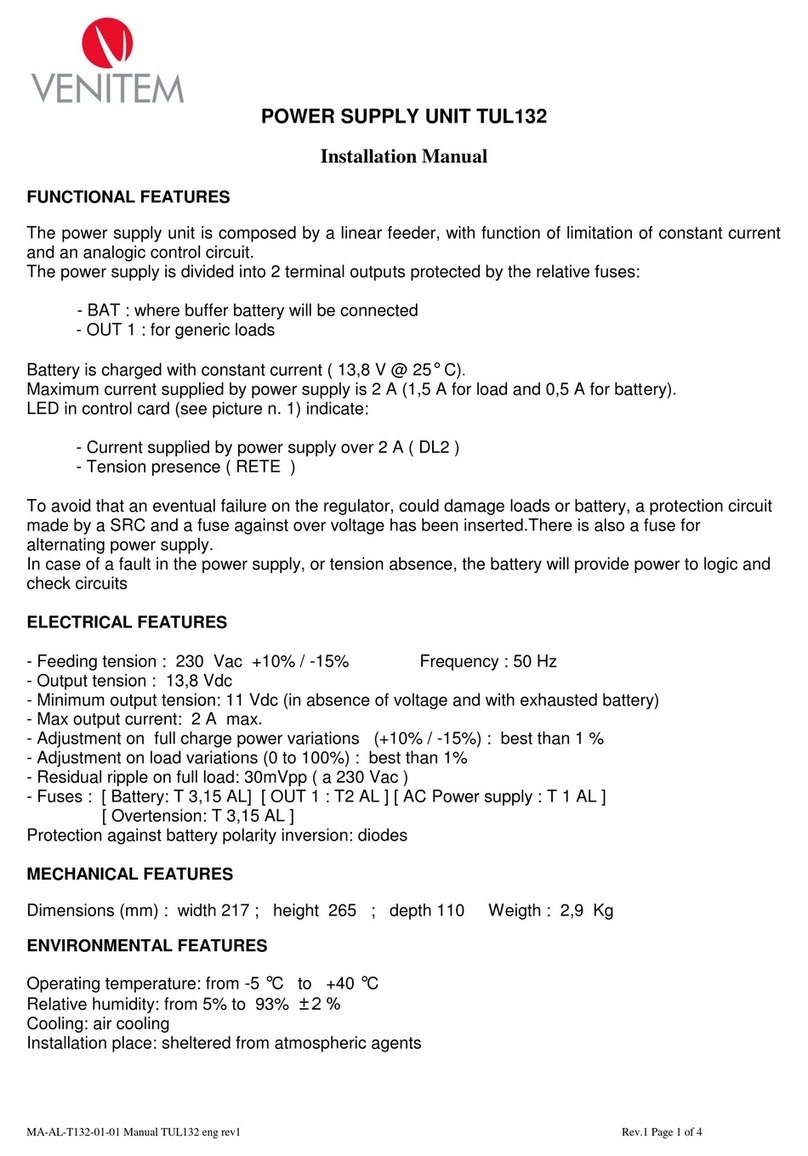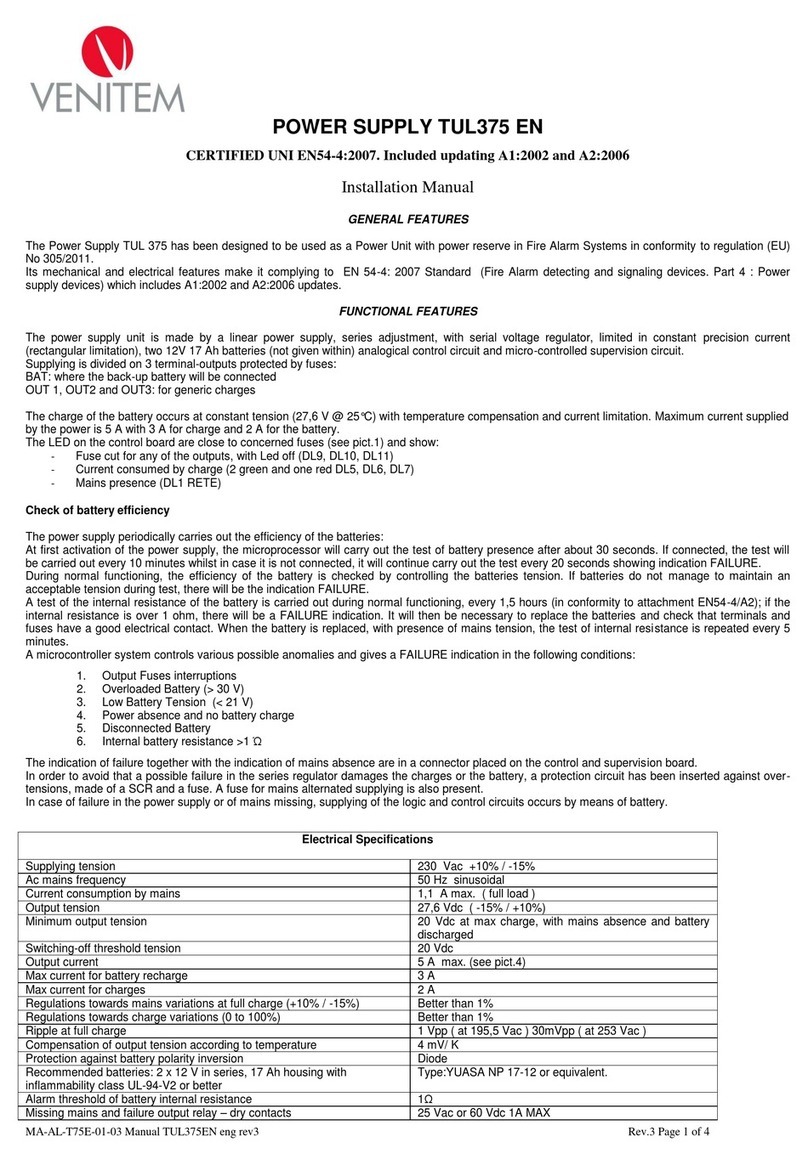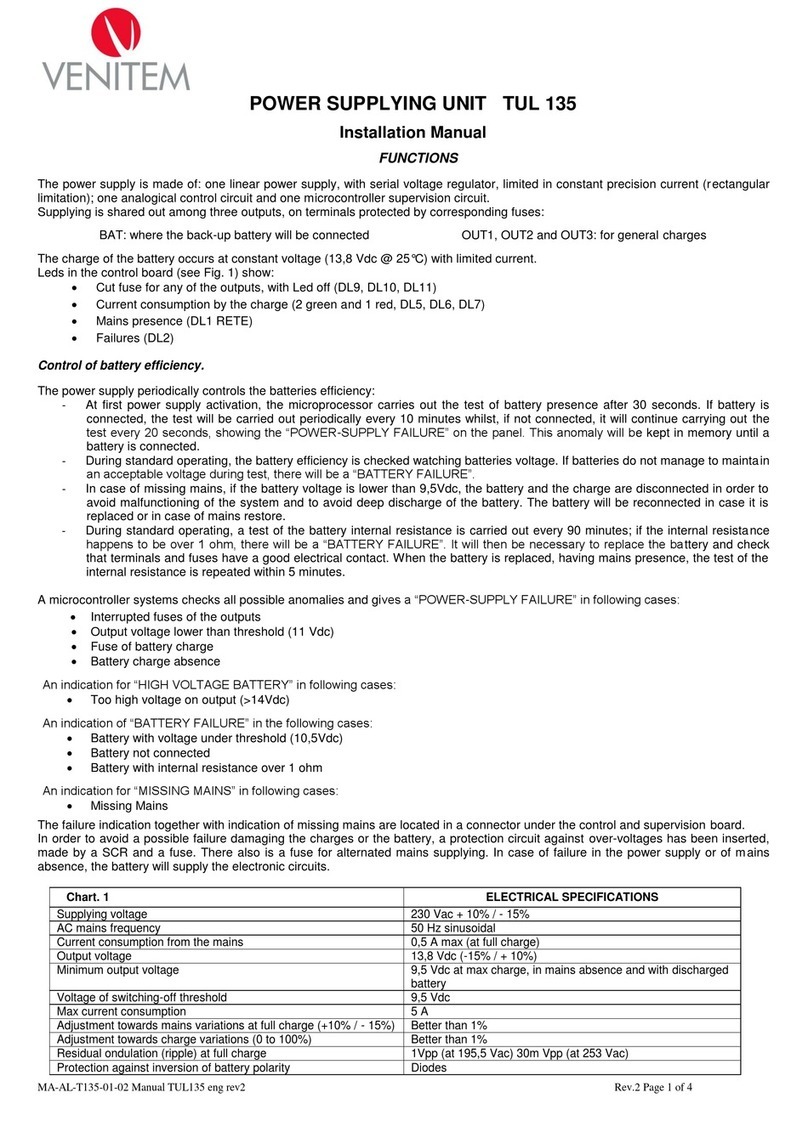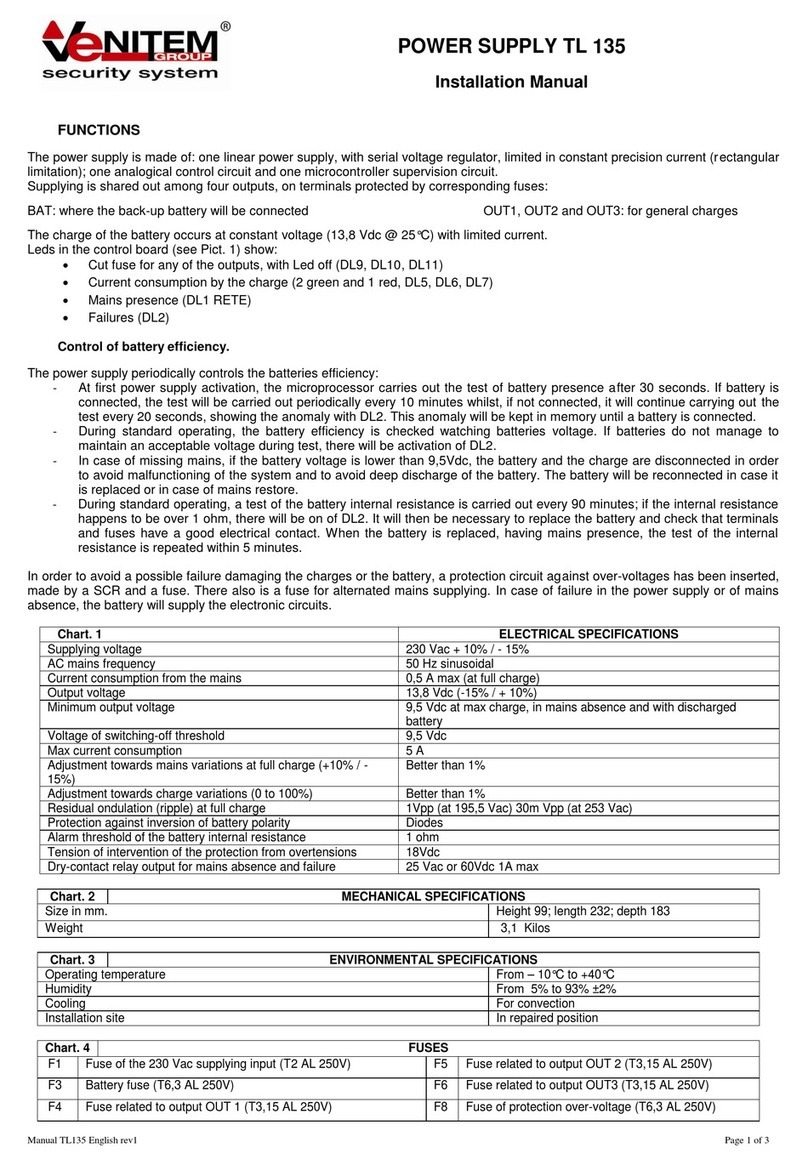
MA-AL-T500-01-07 Manual TUL500EN eng rev7 Page 1 of 8
POWER SUPPLY TUL500EN
CERTIFIED with the standard
EN 54-4:1997+A1:2002+A2:2006
EN 12101-10:2005
Installation Manual
GENERAL FEATURES
The Power Supply TUL500EN has been designed to be used as a Power Unit with power backup in Fire
Alarm Systems, in conformity to regulation (EU) No 305/2011 and how power supply equipment in systems
for smoke control and heat.
Its mechanical and electrical features make it complying to EN 54-4: 2007 Standard (Fire Alarm detecting
and signaling devices. Part 4: Power supply devices) which includes A1:2002 and A2:2006 updates.
FUNCTIONAL FEATURES
The power supply unit is made by a switching power supply, limited in constant precision current (rectangular
limitation), two 12 V 17 Ah batteries (not included) digital and analogical control circuit and micro-
controlled supervision circuit.
Power is available on 3 terminal-outputs protected by electronic fuses: A, B and C, for generic loads and one
connection BATT (with fuse): for back-up batteries. When a fuse trips, the corresponding LED on control
board (see Pict.2, DL1, DL6, DL7, DL8) will turn ON.
Electronic fuses try periodically to restore the power output: if an overload is removed, the power will be
available within 10 sec max.
The battery charge occurs at constant current (1 A) until the battery voltage reaches its nominal value (27,6
V @ 25° C), with temperature compensation. Maximum current supplied by the unit is 5 A, where 4 A is
for charge and 1 A is for recharging the battery.
The power supply is able to give 7 A peak for 25 seconds @ 25°C.
Four LEDs show the loads current consumption (3 green and 1 red: DL2, DL3, DL4, DL5)
One LED shows the Mains presence (LED1)
Check of battery efficiency
The power supply periodically carries out the efficiency of the batteries:
- At first activation of the power supply, the microprocessor will carry out the test of battery presence
after about 20 seconds. If connected, the test will be carried out every 10 minutes whilst in case it is
not connected, it will continue carry out the test every 20 seconds showing indication FAILURE.
- During normal operation, the battery efficiency is checked by controlling the batteries voltage. If
batteries do not manage to maintain an acceptable voltage during test, there will be the indication
FAILURE.
- A test of the battery internal resistance is carried out within 15 seconds after the battery connection
and then repeated every 2,5 hours, at least (in conformity to attachment EN54-4/A2); if the internal
resistance is over 1 ohm, there will be a FAILURE indication. With internal resistance failure
detected, this test is repeated every 5 minutes at most 5 times, to ensure recovery from spurious
failure detection. It will then be necessary to replace the batteries and check that terminals and fuses
have a good electrical contact. When the battery is replaced, the user should wait 15 seconds after
battery connection, with presence of mains voltage, for the repetition of the test and check if the
failure is removed. It is possible repeat the test by pressing the button on the back of front panel
display board for more than 2,5 seconds.
-
A microcontroller system controls various possible anomalies and gives a FAILURE indication in the following
conditions:
1. Output Fuses or Battery fuse interruptions
2. Overloaded Battery (> 28,3 V )
3. Low Battery Voltage (< 20,8 V )
4. Mains power supply absence and no battery charge
5. Disconnected Battery
6. Internal battery resistance >1 Ω
Failures are displayed on a frontal board; the detailed failure is showed on the internal power supply board.







